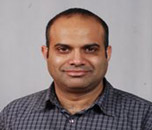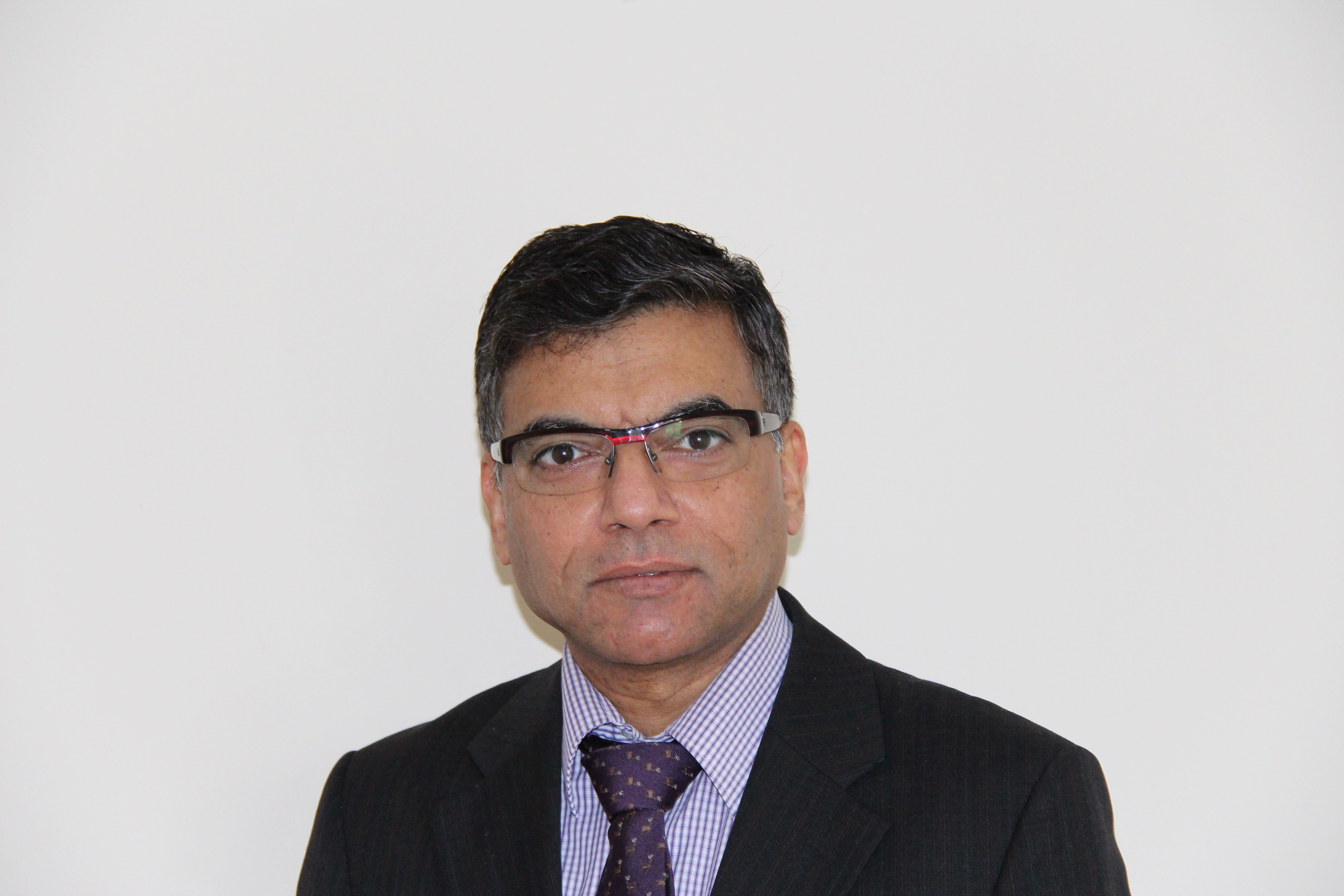Sessions
Retinal Disorders – Diagnostics & Therapies
Retinal disorders continue to represent a major cause of preventable vision loss, making advanced diagnostics and therapies essential for improving long-term patient outcomes. Modern imaging modalities including OCT, fundus autofluorescence, and ultra-widefield systems are enabling unprecedented clarity in detecting early structural changes. These technologies support more accurate staging for conditions such as diabetic retinopathy, macular degeneration, retinal vein occlusion, and inherited retinal dystrophies. Therapeutic innovations are evolving rapidly, from anti-VEGF biologics and steroid implants to gene-based strategies targeting defective retinal pathways. Regenerative medicine, including stem-cell–based photoreceptor replacement and retinal pigment epithelium restoration, is expanding possibilities once considered unattainable. Laser systems, micro-incision vitrectomy platforms, and sustained-release drug technologies are further transforming clinical outcomes. The integration of AI-based predictive modeling assists clinicians in identifying progression patterns and optimizing treatment intervals. These comprehensive advancements are enhancing diagnostic precision, improving functional recovery, and offering new hope for patients with complex retinal diseases.
Corneal Science – Healing & Regeneration
Corneal science is rapidly advancing with breakthroughs in regenerative medicine, tissue engineering, and refractive restoration. Sophisticated diagnostic imaging—such as corneal topography, Scheimpflug tomography, and epithelial mapping provides clear insights into biomechanical stability and early ectatic changes. Innovations in keratoconus management, including cross-linking customization and next-generation intracorneal ring technologies, are restoring structural integrity with greater precision. Bioengineered corneal substitutes, decellularized scaffolds, and stem-cell–derived epithelial layers are offering promising alternatives to traditional transplantation, addressing global donor shortages. Femtosecond laser–assisted lamellar keratoplasty continues to improve visual outcomes, while advances in therapeutic contact lenses and biomimetic hydrogels are accelerating epithelial healing. Molecular research is uncovering pathways involved in inflammation, nerve repair, and corneal sensory restoration, supporting improved treatments for infections, dystrophies, and neurotrophic disease. Collectively, these developments are transforming corneal care through personalized diagnostics and regenerative strategies that enhance transparency, function, and long-term ocular surface health.
Glaucoma – Early Detection & Management
Glaucoma research emphasizes early detection, risk stratification, and sustainable long-term management to prevent irreversible optic nerve damage. Advanced imaging tools, including OCT-angiography and high-resolution nerve fiber analysis, provide clinicians with precise indicators of microvascular compromise and early structural loss. AI-driven algorithms are enhancing screening accuracy, particularly for high-risk populations lacking regular access to ophthalmic care. Treatment options continue to evolve with minimally invasive glaucoma surgeries (MIGS), novel drainage implants, and laser-based interventions designed to reduce intraocular pressure with minimal tissue disruption. Neuroprotective agents and sustained-release drug delivery platforms are being explored to preserve retinal ganglion cell function beyond pressure reduction alone. Personalized management strategies consider central corneal thickness, genetic predisposition, and progression patterns to optimize outcomes. These innovations collectively support earlier intervention, reduced treatment burden, and improved quality of life for patients across diverse clinical stages.
Cataract Surgery – Advanced Techniques
Cataract surgery has transformed into a highly precise refractive procedure with innovations in lens technologies, imaging guidance, and surgical instrumentation. Modern phacoemulsification systems with enhanced fluidics offer greater control and safety, while femtosecond laser–assisted techniques provide unmatched accuracy in capsulotomy and lens fragmentation. Intraoperative aberrometry and digital overlays enable real-time optimization of lens power selection, supporting superior refractive outcomes. Advanced intraocular lenses including extended-depth-of-focus, multifocal, toric, and customizable light-adjustable lenses are expanding visual possibilities for individuals with diverse lifestyle needs. Robotics-assisted maneuvers, micro-incision approaches, and improved wound architecture contribute to faster healing and reduced complications. Postoperative management benefits from sustained-release anti-inflammatory implants and enhanced ocular surface optimization protocols. Collectively, these advancements are redefining cataract care as a sophisticated vision-restoration experience that prioritizes precision, safety, and personalized refractive enhancement for patients seeking greater independence from corrective eyewear.
Refractive Innovations – LASIK & Beyond
Refractive innovations encompass an evolving range of technologies designed to provide sharper, more stable vision outcomes for individuals with myopia, hyperopia, astigmatism, and presbyopia. Modern LASIK platforms feature wavefront-guided, topography-guided, and ray-tracing–based treatments that account for individual ocular uniqueness. SMILE procedures offer minimally invasive correction with rapid recovery and improved biomechanical preservation. Research in corneal biomechanics is enhancing screening accuracy, helping surgeons identify risk factors for ectasia and personalize treatment planning. Phakic IOLs with advanced optics and customizable toric options provide alternatives for patients unsuitable for corneal procedures. Presbyopic solutions such as corneal inlays, laser blended vision, and next-generation multifocal lens implants are expanding opportunities for clear vision across multiple focal distances. Artificial intelligence supports more predictable outcomes through refined nomograms and postoperative data analytics. These integrated advancements reflect a shift toward precision refractive care with improved safety, durability, and long-term patient satisfaction.
Pediatric Ophthalmology – Child Eye Care
Pediatric ophthalmology focuses on early identification, intervention, and management of visual disorders that impact childhood development. Advances in screening tools, including handheld autorefractors and pediatric OCT devices, allow clinicians to detect refractive errors, amblyopia, congenital cataracts, and retinal abnormalities with greater ease. Genetic testing supports diagnosis of inherited conditions such as retinoblastoma and congenital glaucoma, enabling timely treatment. Improved strabismus evaluation techniques and refined surgical procedures provide better alignment outcomes and reduced recurrence rates. Myopia management is a major research priority, with innovations ranging from atropine formulations and orthokeratology to environmental strategies addressing lifestyle influences. Vision therapy, early low-vision rehabilitation, and family-centered care models strengthen long-term outcomes. Modern tele-ophthalmology expands access for communities lacking pediatric specialists, supporting earlier intervention. These advancements collectively promote healthy visual development and improve overall learning, motor coordination, and quality of life for children worldwide.
Ocular Imaging – AI & Digital Technologies
Ocular imaging technologies are rapidly advancing with AI integration, enabling earlier detection and enhanced monitoring of eye diseases. High-resolution OCT, OCT-angiography, adaptive optics, and ultra-widefield imaging systems capture detailed structural and vascular information, supporting precise analysis of retinal and corneal changes. Machine-learning algorithms trained on large datasets assist in identifying subtle abnormalities, predicting progression, and guiding personalized treatment pathways. Digital platforms enable automated screening for diabetic retinopathy, age-related macular degeneration, and glaucoma in both clinical and community settings. Cloud-based imaging workflows improve data accessibility, teleconsultation, and cross-specialty collaboration. Functional imaging techniques, including hyperspectral imaging and fluorescence lifetime analysis, are offering deeper insights into metabolic changes at the cellular level. These integrated advancements enhance diagnostic confidence, streamline clinical decision-making, and support earlier intervention, ultimately improving long-term visual outcomes while reducing the burden on healthcare systems.
Neuro-Ophthalmology – Vision & Brain Pathways
Neuro-ophthalmology explores the intricate relationship between visual pathways and neurological function, addressing disorders caused by optic nerve damage, brain lesions, and systemic disease. Innovations in high-resolution MRI, visual field mapping, and electrophysiology allow clinicians to evaluate complex visual disturbances with greater accuracy. Research is expanding understanding of demyelinating diseases, ischemic neuropathies, and hereditary optic neuropathies, supporting improved diagnostic criteria and targeted interventions. Neuroprotective strategies and gene-based research are opening pathways for future therapies aimed at optic nerve regeneration. AI-enhanced diagnostic tools help identify subtle pattern changes associated with visual pathway dysfunction. Multidisciplinary collaboration between neurologists, neurosurgeons, and ophthalmologists improves outcomes for conditions such as intracranial hypertension, cranial nerve palsies, and visual field defects. Rehabilitation advances including vision therapy and compensatory training—further support recovery and adaptation. These developments strengthen the ability to preserve visual function while addressing complex neurological conditions.
Ocular Genetics – Gene & Cell Therapies
Ocular genetics is transforming the future of vision care through targeted gene therapies, precision diagnostics, and regenerative strategies. Next-generation sequencing has significantly advanced the identification of mutations responsible for inherited retinal diseases, congenital anomalies, and early-onset ocular disorders. Gene replacement therapies, antisense oligonucleotide treatments, and CRISPR-based genome editing are offering unprecedented opportunities to halt or reverse vision loss caused by congenital defects. Stem-cell–derived photoreceptors, retinal pigment epithelium transplants, and induced pluripotent cell technologies are expanding the potential for regenerative repair. Molecular insights continue to reveal disease pathways, guiding personalized therapeutic development and patient-specific prognostic assessments. Ethical considerations, regulatory frameworks, and long-term safety evaluations remain integral to advancing these therapies responsibly. Collectively, ocular genetics continues to reshape clinical possibilities by bridging molecular science with practical interventions that provide hope for individuals affected by challenging hereditary conditions.
Dry Eye Disease – Treatment Strategies
Dry eye disease is a multifactorial condition requiring comprehensive evaluation and individualized treatment strategies. Advances in diagnostic tools including meibography, tear osmolarity testing, and inflammatory biomarker analysis allow clinicians to differentiate between aqueous-deficient and evaporative subtypes with greater precision. Therapeutic innovations range from lipid-enhanced artificial tears and preservative-free formulations to intense pulsed light therapy, thermal eyelid treatments, and microblepharoexfoliation targeting meibomian gland dysfunction. Novel anti-inflammatory agents, neurostimulation devices, and regenerative therapies using platelet-rich plasma are expanding treatment possibilities. Lifestyle modifications, digital eye strain management, and ocular surface optimization play essential roles in symptom control. Personalized approaches consider environmental factors, systemic health, and long-term adherence to support improved comfort and tear film stability. Collectively, these advancements are improving quality of life for individuals affected by this chronic and increasingly prevalent ocular surface disorder.
Ocular Oncology – Diagnosis & Care
Ocular oncology focuses on early detection, accurate diagnosis, and multidisciplinary management of tumors affecting the eye and adnexa. Enhanced imaging technologies including ultrasound biomicroscopy, OCT, fluorescein angiography, and MRI—play a critical role in differentiating benign lesions from malignant formations. Advances in molecular diagnostics and genetic profiling enable improved risk stratification for conditions such as uveal melanoma, retinoblastoma, and ocular lymphomas. Treatment modalities continue to expand through targeted radiotherapy, plaque brachytherapy, laser photocoagulation, and emerging immunotherapies aimed at reducing systemic spread. Minimally invasive surgical techniques support improved ocular preservation and functional outcomes. Collaborative care between oncologists, pediatric specialists, and ocular surgeons enhances long-term survival and quality of life. Ongoing research explores tumor microenvironments, metastatic pathways, and personalized interventions. This combination of advanced diagnostics and therapeutic innovation strengthens the capacity to provide precise, compassionate care for individuals facing complex ocular tumors.
Uveitis & Ocular Inflammation – Immune Insights
Uveitis represents a diverse group of inflammatory disorders often linked to autoimmune conditions, infections, or systemic disease. Advances in imaging, including OCT and fluorescein angiography, support earlier detection of inflammatory changes affecting the uveal tract and retina. Biomarker research and cytokine profiling provide deeper insights into immune pathways driving chronic inflammation, enabling more targeted therapeutic strategies. Biologic agents, corticosteroid implants, and immunomodulatory medications are improving long-term control while reducing treatment-related complications. Novel drug-delivery systems, including sustained-release formulations, provide consistent anti-inflammatory effects with reduced systemic exposure. Precision diagnostics help identify infectious etiologies and guide appropriate antimicrobial management. Multidisciplinary collaboration enhances outcomes for individuals with systemic associations such as sarcoidosis, Behçet’s disease, and juvenile idiopathic arthritis. These integrated advancements support more effective inflammation control, preservation of visual function, and improved quality of life.
Optometry Science – Vision Correction Advances
Optometry science continues to evolve through improved diagnostics, refractive technologies, and advanced vision correction solutions. High-definition wavefront aberrometry, topography, and binocular vision assessment tools provide deeper understanding of visual performance and perceptual dynamics. Myopia control strategies including orthokeratology, atropine therapy, and advanced spectacle lens designs offer effective methods to slow childhood progression. Contact lens innovations feature enhanced oxygen permeability, moisture retention, and designs optimized for complex refractive errors, irregular corneas, and presbyopia. Digital eye strain management and ergonomic solutions support visual comfort in technology-intensive lifestyles. Integration of tele-optometry expands preventive care and remote assessment. Data-driven approaches help refine prescriptions, improve visual outcomes, and support long-term ocular wellness. Collectively, these advancements highlight the growing role of optometry in delivering comprehensive, evidence-based vision care for diverse populations.
Ophthalmic Drug Delivery – Novel Formulations
Ophthalmic drug delivery research is focused on improving therapeutic efficacy, reducing treatment burden, and enhancing patient adherence. Traditional topical formulations face challenges such as rapid tear washout, limited bioavailability, and frequent dosing requirements. Novel delivery systems including nanoparticles, microneedles, in-situ gels, liposomes, and sustained-release implants are revolutionizing how medications reach ocular tissues. These technologies enable targeted penetration to the cornea, retina, and posterior segment with fewer systemic effects. Gene-based delivery platforms and biologic formulations are expanding options for chronic diseases such as macular degeneration, glaucoma, and uveitis. Smart contact lenses, drug-eluting materials, and biodegradable carriers offer new pathways for long-term controlled release. Improved pharmacokinetics, precision targeting, and polymer-based innovations support more reliable therapeutic outcomes. These advancements reflect a growing commitment to patient-centered design and improved quality of care across ophthalmology.
Robotic & Minimally Invasive Eye Surgery
Robotic and minimally invasive eye surgery are redefining surgical precision, safety, and consistency in ophthalmic care. Robotic-assisted systems enhance stability and fine-motor control, allowing surgeons to perform complex maneuvers beyond natural human capability. Micro-incision techniques minimize tissue disruption, reduce inflammation, and shorten recovery times. Advanced imaging guidance, including intraoperative OCT and real-time tracking, supports precise manipulation during retinal, corneal, and glaucoma procedures. Technological innovations in robotics are improving outcomes for delicate tasks such as membrane peeling, subretinal injections, and gene therapy administration. Miniaturized instruments and automated platforms are expanding possibilities for highly targeted interventions. AI-driven planning tools and decision-support systems further refine surgical accuracy and postoperative prediction. These advancements collectively represent a significant shift toward safer, more consistent procedures, improving both surgeon capability and patient outcomes in the future of ophthalmic surgery.








